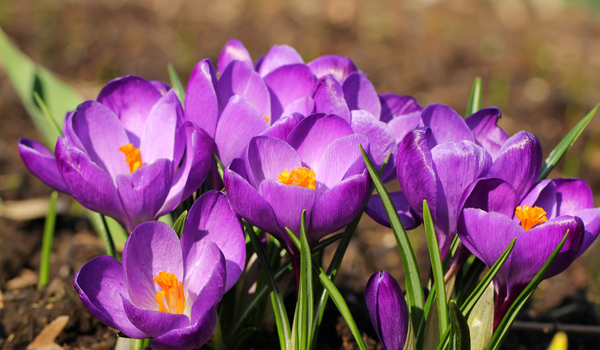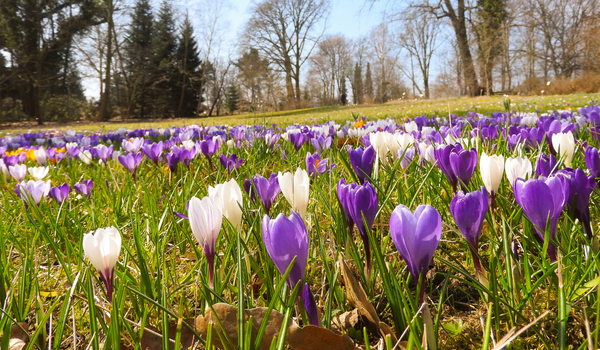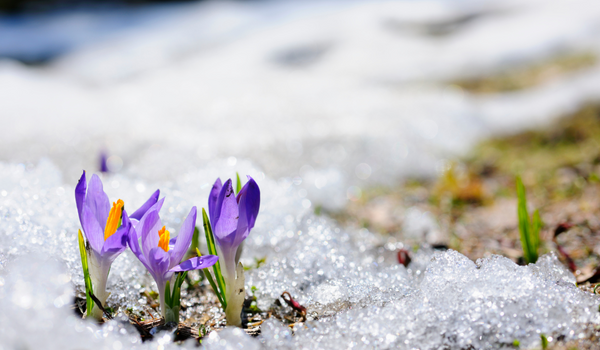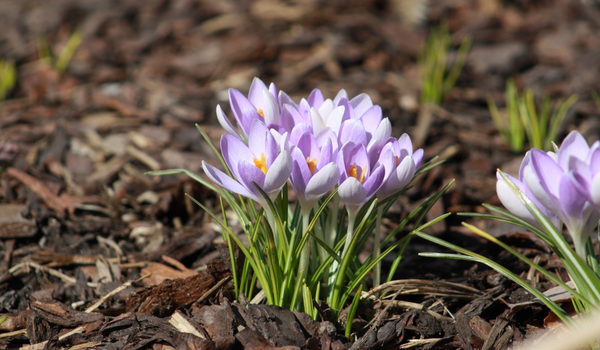How to grow Crocus? - The ultimate growing guide for Crocuses
Discover the magic of cultivating stunning Crocuses with our comprehensive growing guide! Whether you're an avid gardener or just starting, unlocking the secrets to nurturing these vibrant blooms will elevate your gardening experience. In this guide we delve into the intricate world of these enchanting flowers, offering step-by-step insights, and essential techniques to ensure your Crocuses thrive. From selecting the right soil to understanding optimal planting times and providing proper care, this ultimate guide covers everything you need to know to cultivate a breathtaking display of color in your garden.
To get started with planting, be sure to check out our collection of crocus bulbs for the best selection.
Caring for blooming Crocuses: essential tips for maintenance
To maintain vibrant blooming Crocuses, ensure adequate care. Once the flowers bloom, deadhead them promptly to redirect energy back into the bulbs for future growth. Ensure the soil remains well-drained to prevent waterlogging, as excess moisture can lead to bulb rot. Regularly check for pests like aphids or squirrels, employing organic pest control methods if necessary. After blooming, allow the foliage to wither naturally as it contributes to next year's growth. Refrain from cutting the foliage until it turns yellow and wilts completely. Lastly, consider applying a balanced fertilizer in early autumn to nourish the bulbs for the following season's blossoms.
For more detailed information on maintaining healthy crocuses, check out our comprehensive guide on crocus care. If you're looking for detailed instructions, check out our guide on how to plant crocuses for all the tips you need.

Crocus bloom time
Crocuses, heralds of spring, bloom at various times depending on their species and variety. Typically, these vibrant flowers burst into bloom early in the year, often appearing as early as late winter to early spring. The bloom time for crocuses can vary based on the specific type planted, with some flowering as early as February while others may bloom through March or April. Factors such as location, climate, and local weather conditions can also influence their bloom schedule. For precise timing, plant early blooming varieties for an early burst of color and later varieties for a prolonged flowering season in your garden.
Importance of deadheading Crocuses
Deadheading crocuses, the process of removing spent blooms, is crucial for encouraging continuous flowering and promoting plant health. By snipping off faded flowers before they produce seeds, the plant's energy is redirected into bulb growth rather than seed formation. To deadhead crocuses, gently pinch off the withered blooms at the base, ensuring not to damage the surrounding foliage or emerging buds. Employing this simple technique not only prolongs the blooming period but also enhances the bulb's ability to store nutrients for the following season. Deadheading, done carefully, maintains the aesthetic appeal of the plant while fostering its vitality.
Crocus lifespan
Crocuses typically exhibit a blooming period lasting around 3 weeks. Factors such as species, weather conditions, and care influence their lifespan. These hardy bulbs bloom in early spring, adorning gardens with their delightful blossoms. With proper care, including well-draining soil, ample sunlight, and moderate watering, crocuses can thrive. Once in bloom, these resilient flowers bring charm and color to landscapes, signaling the onset of spring. Regular maintenance, like deadheading spent blooms, promotes prolonged flowering and ensures a more extended display of their beauty in gardens and landscapes.

Crocus multiplication: insights into propagation
Crocuses are prolific bulbous plants that naturally multiply through corm division and seed propagation. To propagate these vibrant flowers, division of corms is a common method: in late spring or early summer, dig up the clumps of Crocus bulbs after the foliage dies back. Gently separate the smaller corms from the mother bulb and replant them in well-draining soil, approximately 3 inches deep and spaced about 2 to 3 inches apart.
Optimal Crocus growth methods
For optimal Crocus growth, start by selecting a well-drained planting site receiving ample sunlight. Prepare the soil by mixing in organic matter like compost or peat moss to improve drainage and fertility. Crocuses thrive in slightly acidic to neutral soil with a pH range of 6.0 to 7.0. Plant bulbs in the fall, at a depth of about 3 to 4 inches (7.6 to 10 cm), with a spacing of 2 to 4 inches (5 to 10 cm) apart. Ensure consistent moisture during their growth period but avoid waterlogged conditions. Apply a balanced fertilizer after flowering to promote the next season's growth.
Selecting the ideal soil for Crocuses
Choosing the right soil for Crocuses is vital for their successful growth. Opt for well-draining soil, preferably sandy or loamy, as it prevents waterlogging, which can rot the bulbs. A pH level between 6 and 7 suits Crocuses best. Enhance soil quality by adding organic matter like compost or peat moss to improve drainage and fertility. Ensure the planting area receives adequate sunlight, as Crocuses thrive in bright locations. Prior to planting, loosen the soil to a depth of about 6-8 inches to facilitate root growth.

Methods to make Crocus grow faster
To encourage faster growth of Crocus bulbs, several methods can be employed. Optimal planting time is crucial; plant bulbs in well-draining soil during the fall, before the first frost. Ensure the planting depth is approximately three times the bulb's height. Adequate sunlight exposure is vital, so choose a spot receiving ample sunlight. Providing regular watering during the growing season while avoiding waterlogging is essential. Consider adding organic matter or compost to enrich the soil and enhance nutrient availability. Applying a balanced fertilizer low in nitrogen can aid in robust growth. Consistent care and suitable environmental conditions can significantly accelerate Crocus growth.
Spring planting for Crocus bulbs
For a vibrant spring bloom, proper planting of Crocus bulbs is essential. Choose a well-draining location with partial to full sun exposure. In early autumn, plant bulbs around 3 inches deep and 3 to 4 inches apart, ensuring the pointed end faces upwards. Loosen the soil and add organic matter like compost for enhanced drainage and nutrition. Water thoroughly after planting to settle the soil and provide initial moisture. Consider planting in clusters for a more striking display.
Crocus growth timeline from bulb to bloom
The Crocus growth timeline from bulb to bloom is a fascinating process. Planted in fall, these hardy bulbs remain dormant until the soil cools down. Over winter, they establish roots, preparing for growth. As temperatures rise in late winter or early spring, shoots emerge, followed by slender, vibrant-hued flowers. Generally, Crocuses bloom 6-10 weeks after planting, heralding the arrival of spring. The precise timing varies based on species, environmental conditions, and location.

How many Crocuses from a single bulb?
One single Crocus bulb will produce one flower. However, over time, Crocus bulbs can multiply and form clumps, resulting in multiple flowers emerging from a cluster of bulbs. Under ideal conditions, these bulbs might split into offsets or daughter bulbs, leading to an increased number of blooms. The rate of multiplication varies based on factors like species, growing conditions, and care.
Initial bloom: will Crocuses flower in the first year?
Crocuses typically bloom in their first year if properly planted. Planting crocus bulbs in well-drained, fertile soil in the fall allows them to establish strong root systems. Adequate sunlight and appropriate watering also aid in their initial flowering. While some varieties might exhibit varied bloom times based on species and local conditions, many crocuses, especially the early-blooming types like Crocus chrysanthus or Crocus tommasinianus, can surprise gardeners with their charming blooms in the first spring after planting.
Bulb growth over time: understanding Crocus bulb size changes
Understanding Crocus bulb size changes over time is integral to successful cultivation. Initially, Crocus bulbs appear small, typically ranging from 1 to 2 centimeters in diameter, with a papery outer layer. As these bulbs grow, they undergo a remarkable transformation, increasing in size and developing new offsets or daughter bulbs alongside the original. With proper care and suitable growing conditions, these bulbs can expand significantly, sometimes doubling or tripling in size over the years.
Share
